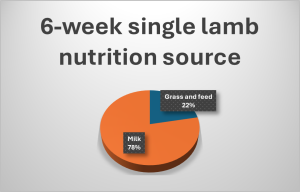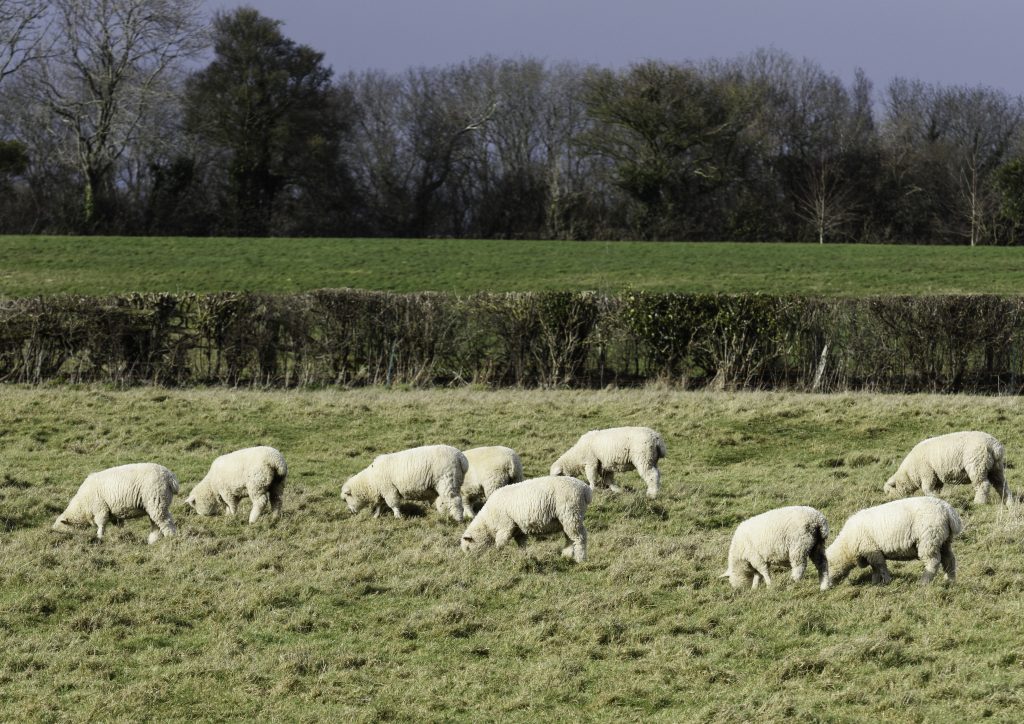Want stress-free weaning? You might just need to consider offering your weaning lambs a feed lick this year…
Weaning lambs is all about keeping stress to a minimum. With this achieved, lambs are less likely to suffer growth checks that can hurt the balance sheet. Weaning lambs without stress requires producers to get a few ducks in a row. Planning needs to start as soon as 8-weeks of age; body condition scoring ewes and weighing lambs so that you have the intel to wean early where required.
In this blog, we deep dive into the do’s and don’ts of weaning lambs, with a particular focus on nutrition as being one of the key drivers of profitability.
When Is The Right Time To Wean Lambs?
It is generally agreed that grass-fed lambs should be weaned at around 12 weeks, as ewe milk production decreases significantly and contributes little to the lambs’ diet. At this stage, ewes may even start competing with their lambs for grazing resources. Lambs should only be weaned once they are:
- Consuming at least 0.25kg of solid feed per day,
- have been doing so for a minimum of 3 days,
- are 35+ days old, and
- are 2.5 times their birth weight.
Note that breed type, weather and farming system can impact on this criteria.
Early Weaning
Weaning lambs earlier than 12 weeks can help with performance if the following is applicable:
- Lamb growth is limited (<200g/day): Prioritising grazing for lamb growth when ewe milk is insufficient.
- Grazing is limited (<4cm): Reducing requirement for grazing by up to 50% (1.25kg dry matter per ewe per day) compared to pre-weaning.
- Ewes are in poor condition: Allowing more time for ewes to recuperate and rebuild body condition before the next mating season.
- Mothering ewes are yearlings: Providing more time to recover body condition and continue growth.
It is important to note that weaning before 12 weeks is not without its risks. Careful management and precision nutrition is required to prevent stress, immune compromise, and growth checks. Supplementary feeding can enable earlier weaning.
Late Weaning
Weaning lambs later than 12 weeks is only advised if lambs are still achieving target growth rates, ewes are fit, and pasture for both ewe and lamb is adequate.
Feeding Weaning Lambs Effectively
Weaning lambs successfully depends on the rate of rumen function development, and the ability of a lamb to source nutrition from a grass-based diet.
Lamb’s don’t start out their life as a ruminant. Instead, they rely on their gut to process milk as their sole source of nutrition for 4 weeks. Milk yield peaks at 2-3 weeks (twins) or 3-5 weeks (singles). After this, lambs increasingly rely on grazing and feed to meet their nutritional needs for optimal performance.


(Source: FAS)
Supporting Rumen Development
Proper rumen development ensures that when a lamb is weaned, and milk is removed from its diet, it can meet its energy needs solely through solid feed. This helps maintain steady growth and performance without any setbacks.
The speed of rumen development is controlled by the diet fed. Early supplementation with a creep feed has been study proven to positively impact rumen development and function during the transition from milk to solid feeds. The long term effects on intakes, growth performance, and carcass weights were recently reported in a recent study conducted by Frontiers.
Growing lambs generally need to consume around 4% of their body weight as dry matter (DM) per day. For example, a 30 kg lamb that is growing well on high-quality forage will eat around 1.2 kg DM per day.
Can’t Afford To Creep Feed Weaning Lambs?
If grazing is poor or growth rates are not as high as desired and weaned lambs are experiencing health issues, they will probably benefit from some form of supplementation. But sometimes creep feeding is not always a financially viable or practical option.
Feed licks are pretty commonplace on many sheep farming systems. They deliver ewes and tups with the energy, protein, minerals, vitamins and trace elements required for health and fertility at key times of the year (tupping and lambing). It’s less common to feed them to growing lambs, however, their benefits are no less striking.
Unlike a creep feed, feed licks promote little-and-often intakes, which helps to keep rumen pH nice and consistent. They are also really easy and require very little labour, compared to feeding.
Supplying weaned lambs with Crystalyx Extra High Energy will provide all the supplementary nutrients necessary to balance grass and make up for the loss of the ewes milk. The high levels of sugar present in Crystalyx stimulates the rumen allowing the lamb to consume and digest more forage resulting in improved growth rates.
Tips For Minimising Growth Checks In Weaning Lambs
- Take a faecal sample from the lambs, treating any parasite burdens
- Castrate, vaccinate, drench and tag ahead of weaning (not same day)
- Introduce lambs to any new feeds a week pre-weaning
- Withdraw lambs abruptly once they are fit for weaning
- Move ewes out of sight of the lambs*
- Then give priority access to the best quality grass available
- Ensure a supply of fresh and clean water at all times
- Provide straw in racks rather than hay to avoid overconsumption
- Offer concentrates/supplementation if grazing nutrition is inadequate
- Avoid significant dietary changes to keep intakes consistent
* Return ewes in good body condition to a field with low grass cover. Return ewes is poor body condition to a field with higher grass cover. Routinely measure and control sward height to 4-6cm.
Shop Crystalyx Extra High Energy

